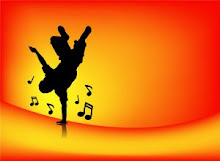It is not easy to make a living as a contemporary dancer. You are either the top dancer in your class, and then you may be accepted to a large modern dance company, or you are struggling to make a living, pay your bills and juggle between your part time dancing job, to your other side job.
The side jobs are some times low skilled jobs. I have friends who work as waiters, cleaners and sails men. They don't complain, but I know they're not happy with that, and their dancing career suffers because their jobs are egzosting.
It's not easy to develop a dancing career, and I knew this from the start. But I chose this career anyway. I think a good dancer is not only a person who knows how to move his body. It's a person who knows he can't live with out dancing, and he's ready to make sacrifices and work in low skilled side jobs if necessary.
After you decided that this describes you, now we get to the practical part: How can I still make a living, "incase I don't make it"?
Reading a post about this subject not long ago, I found out of some trades that enable you to make a living and dedicate your time to develop your passion career. These trades include: hairdressing and cosmetics, natural therapies, book keeping, carpentring, electricity etc'. There are other job that allow you a lot of free time to focus on your dancing career.
What did I do?
When I turned 18, what I wanted most was to study dance abroad.
I was lucky enough to get accepted to the Kibbutz contemporary dance company, so for a year I did not have to worry. Instead, I participated in many modern dance performances around the globe, and enjoyed every minute.
After my job at KCDC ended, I returned home and took a massage course. I work at it from time to time, aside from my dance job, and I manage just fine.
